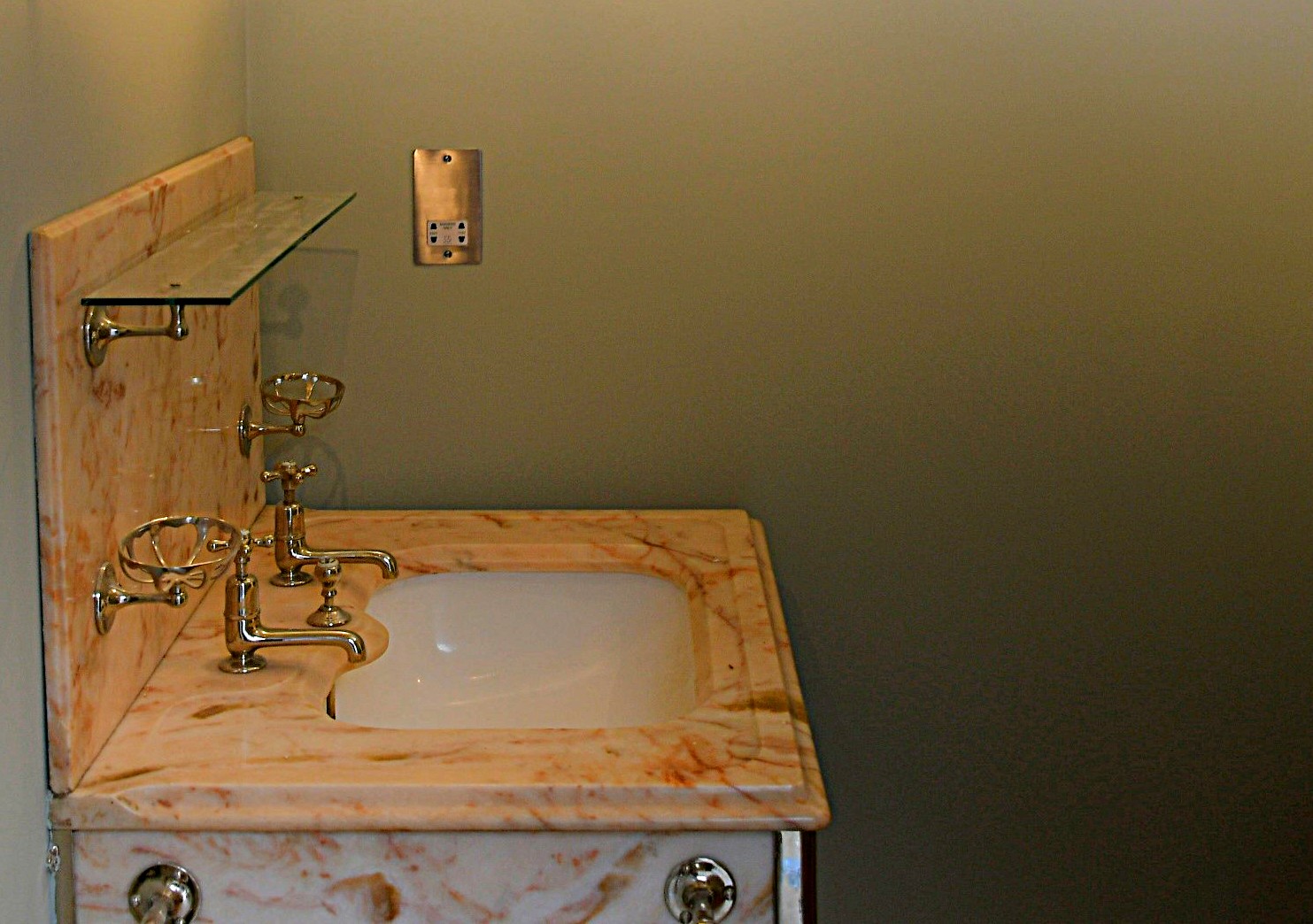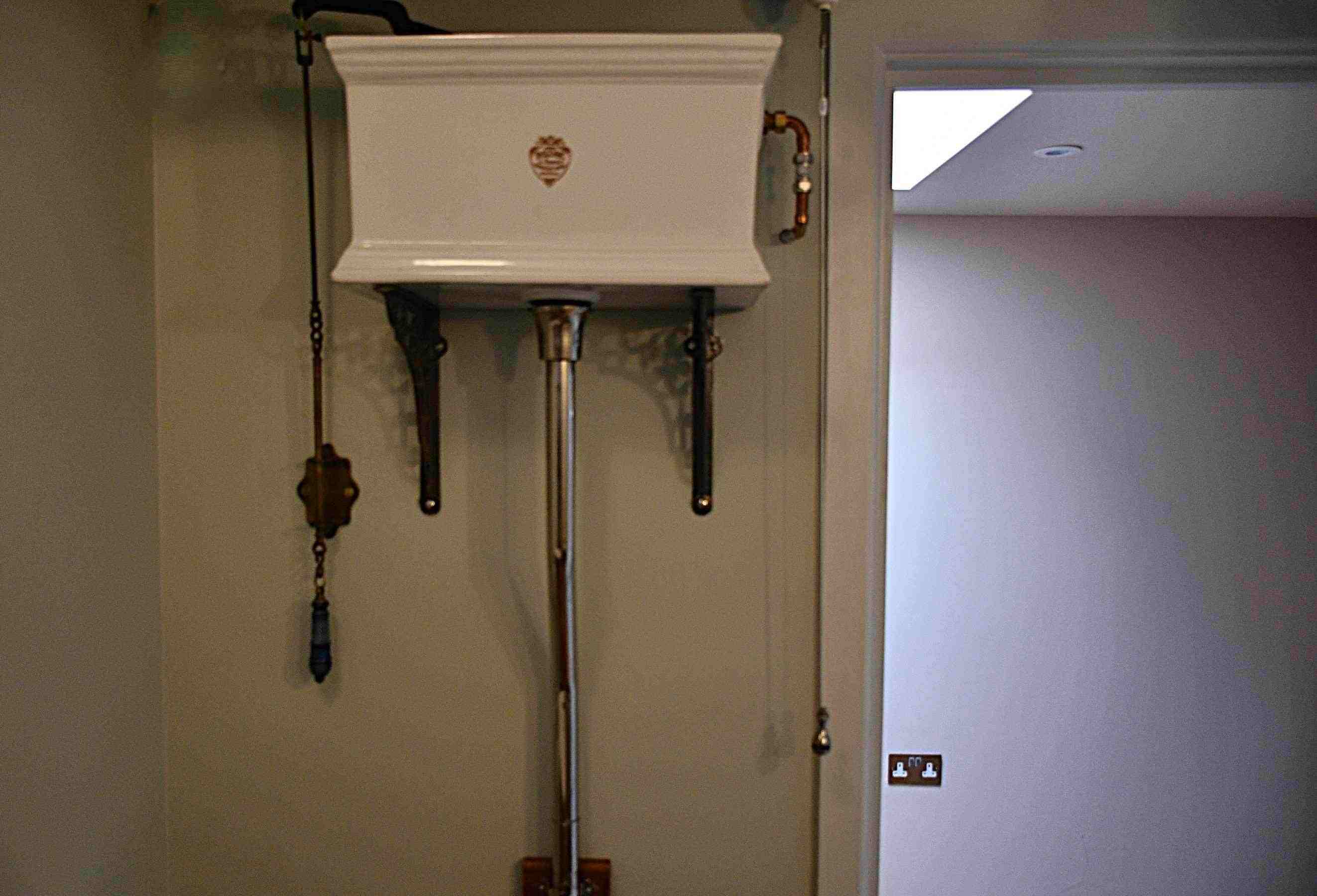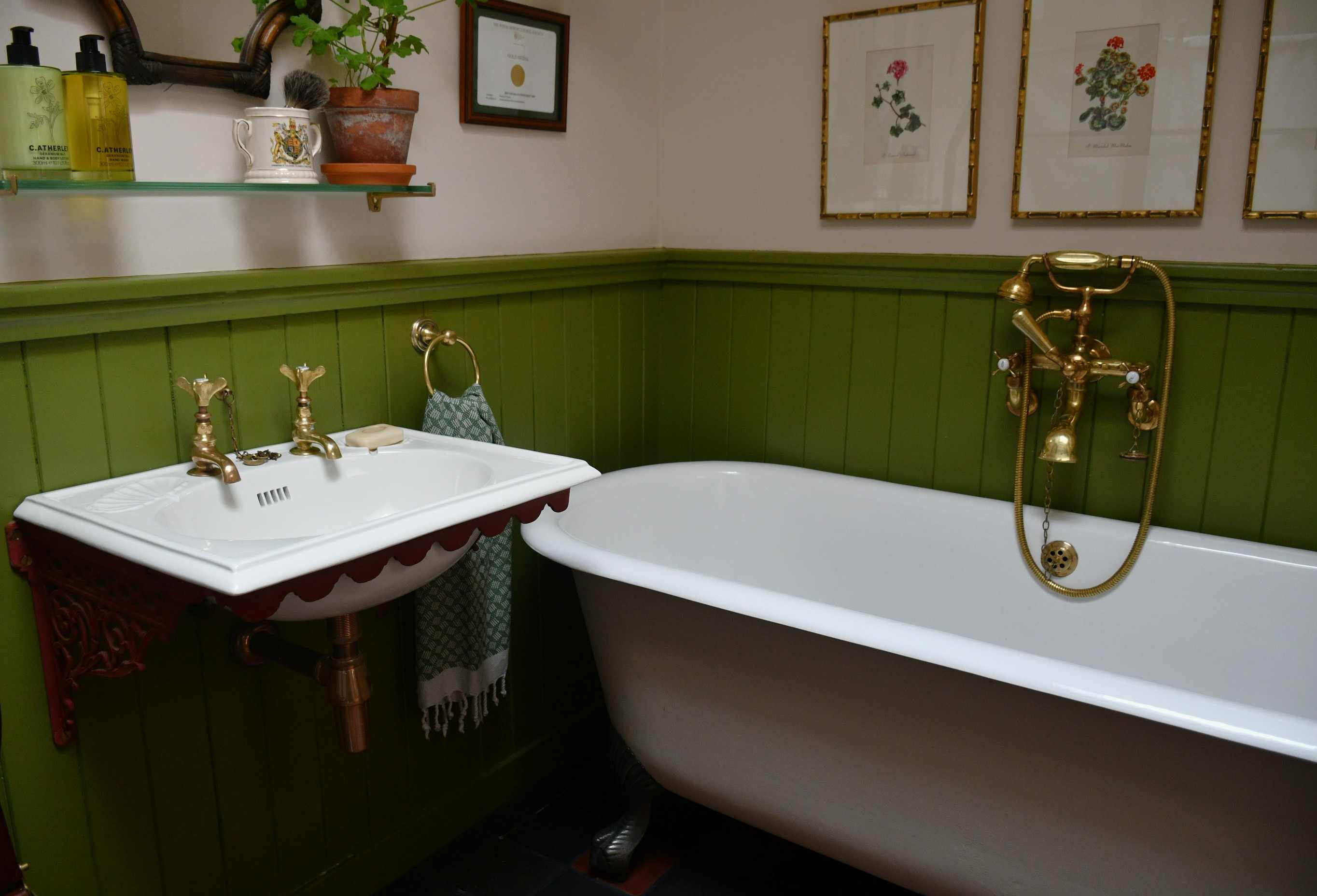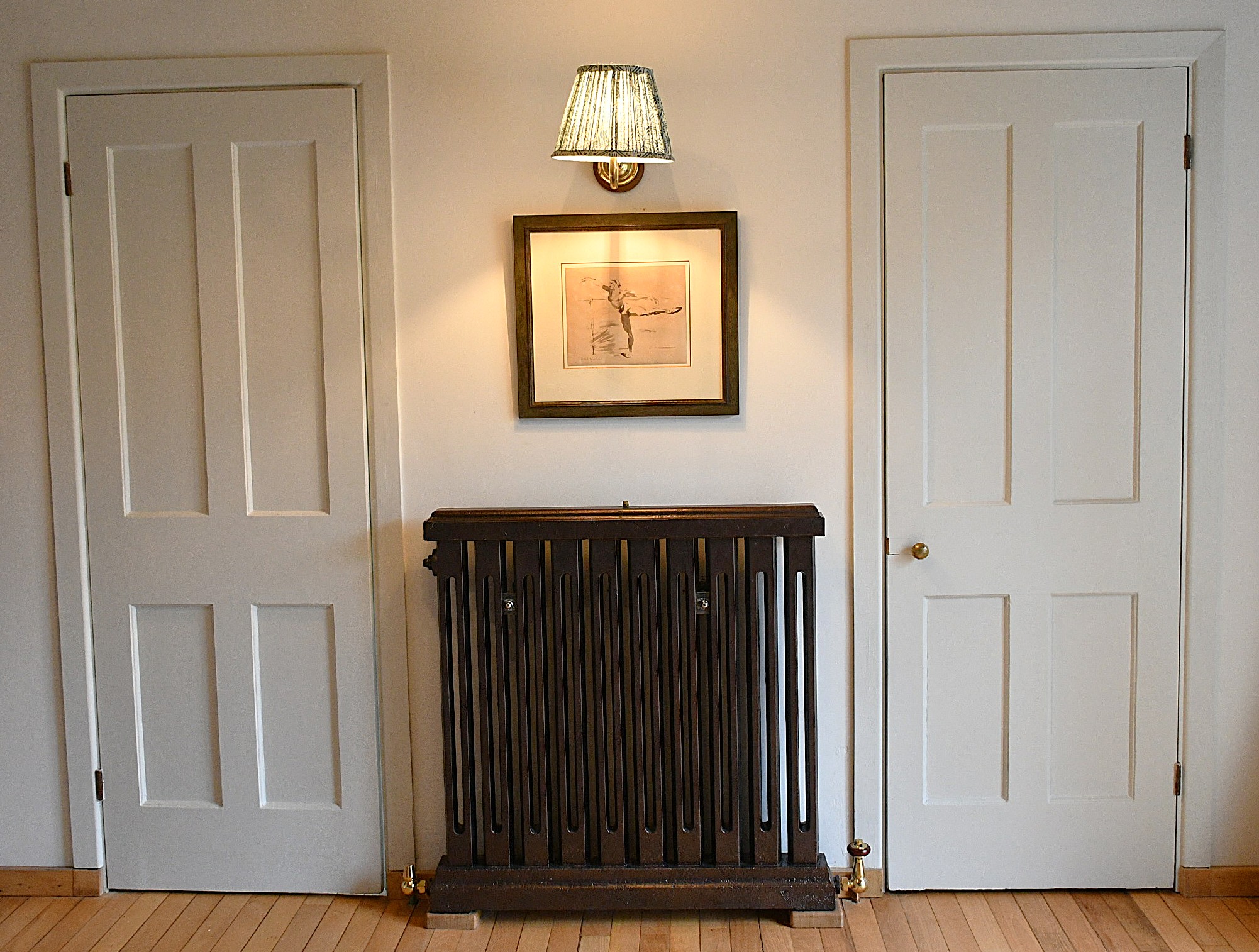BATHROOMS
Mongers has supplied many bathrooms over the last 25 years. It became an area of expertise for us, partially due to the luck of having good restorers nearby and partially because many other salvage yards did not want to do sanitaryware. Yards full of bricks and stone are not great environments for the storage of fragile antique ceramic items!
The issue with designing our own bathrooms using items from what is a quite extensive and ever changing stock was that I would tend towards using items that have proved hard to sell, whereas my wife Louise wanted all the best and most desirable items. To say that we have a mixture of both may not be quite accurate as I strongly suspect that Louise has managed to get to fit more pieces than I have.
Apart from two shower trays, all the sanitaryware in the house is antique or reclaimed. We have created a Victorian bathroom, a royal loo, a functional en-suite and a cosy bathroom in the annex.
The best advice that I can give to anyone wanting to successfully instal a fully reclaimed bathroom in a new build, is to plan in advance. Get your wastes running under the floors and in the walls from the start of the build, so that you can accommodate non standard fittings, S trap pans, cisterns with external overflows etc. I also always strongly advocate spending a little bit extra on your sanitary ware and buying restored pieces from reputed dealers. I have seen so many lovely pieces ruined or broken by plumbers that have been rather heavy handed or a little impatient. Within the correct environment and with the right tools most things can be renovated without risk of doing damage.
The Victorian bathroom has a Shanks canopy bath. These baths were popular in the late Victorian and Edwardian eras, when plumbed hot water was only available to the wealthy and, should you be lucky enough to have hot running water back then, a bath that had multi functions was obviously very desirable. With modern water pressures canopy baths can have issues and do not always perform perfectly but they do look great. We also have a Shanks marble washstand, which I acquired many years ago; sold it to some very good customers who had it for 20 years, and when, on selling the house, the new purchasers decided to get rid of it, it came back into our possession. Louise, at this point decided to keep it! There is also a Bolding high level china cistern with an Excelsior pan.
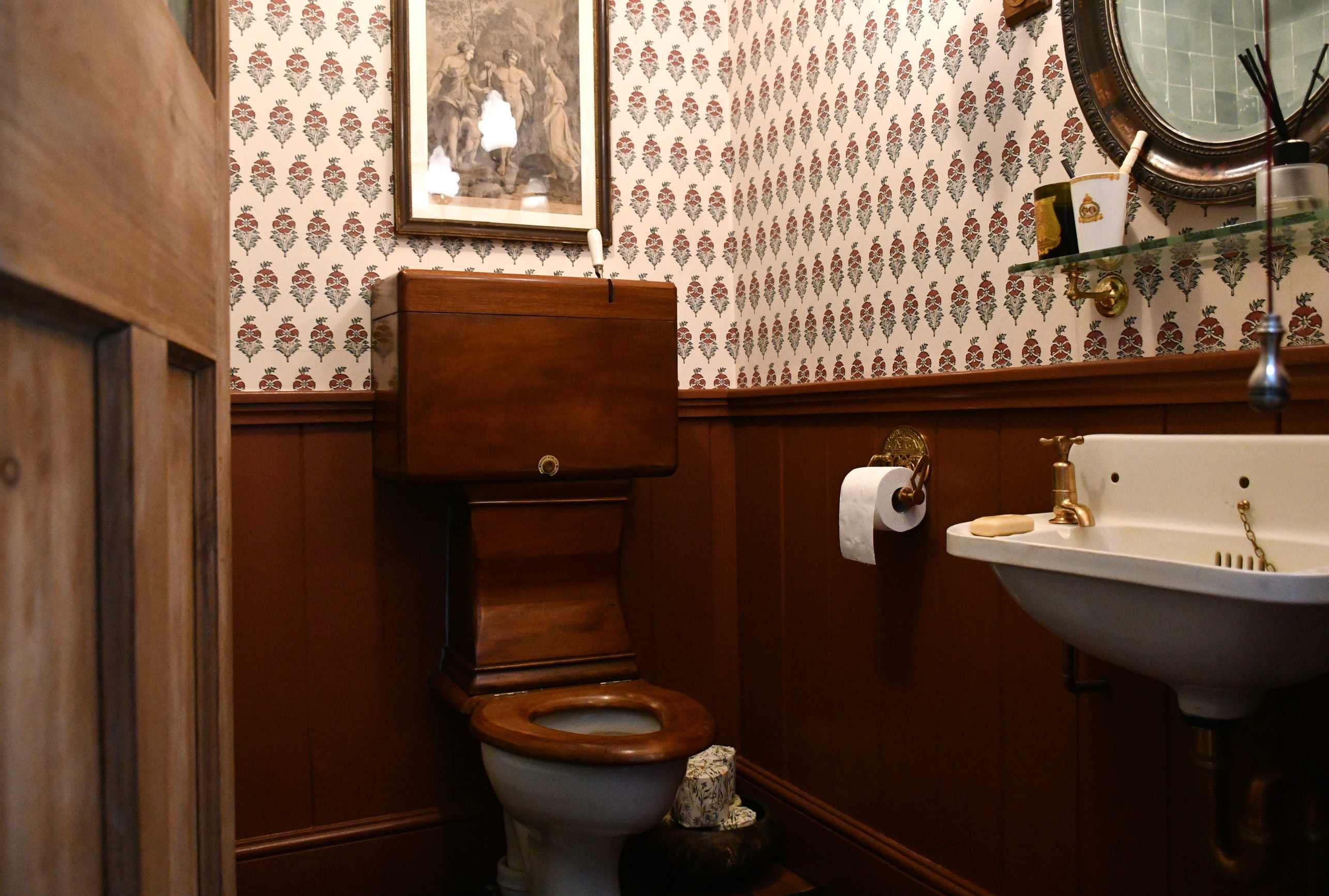
The ’Royal loo’ has a Mahogany cistern with pan, which, I was told by the dealer from whom I purchased it in Northumberland, came from Glamis Castle (hence the ‘Royal loo’). The annex, which we hope to rent out, has an ever popular French double ended bath, a practical shower, simple ‘Deano’ high level cistern with mid-century pan. The aim is to make this rented space quite easy to maintain and keep clean.
Upstairs in the en-suite we have a large serpentine double basin, this is also French by Jacob Delafon. I would have liked to have another bath here, but it was decided that the double basin would be more practical and get greater use.
RADIATORS
Of all salvage, the one item that is still an essential part of any renovation or build and still out performs any modern equivalent is the reclaimed cast iron radiator. We all love them, whether you have them beautifully polished and shiny, painted white or left rusty they will enhance any space. We, even with having underfloor heating, had to incorporate a few radiators. There is a big Duchess radiator as a real statement in the kitchen, where, because we have retained the original polished concrete floor, we need a radiator to heat the large space, and two bronze powdercoated rads in the bedroom, along with a couple of heated towel rails in the bathrooms.
Not only are they very attractive but they are truly practical, giving lots of heat and remaining hot for hours after the boiler has gone off. Treat them as a piece of furniture and they will enhance your interior.
TAPS
All the time I get told by customers that they do not want old taps because you can’t get parts, or don’t have standard threads. This is not true. Old taps are great, far better manufactured than most of their modern counterparts and they were made in all shapes and sizes. Most are simple to repair, using a readily available rubber washer, a seating tool, some Vaseline and a bit of hemp! Do not believe advice from plumbers, architects and other professionals that say any different. I have in all the years that I have been restoring taps only come across a handful that we can not restore.
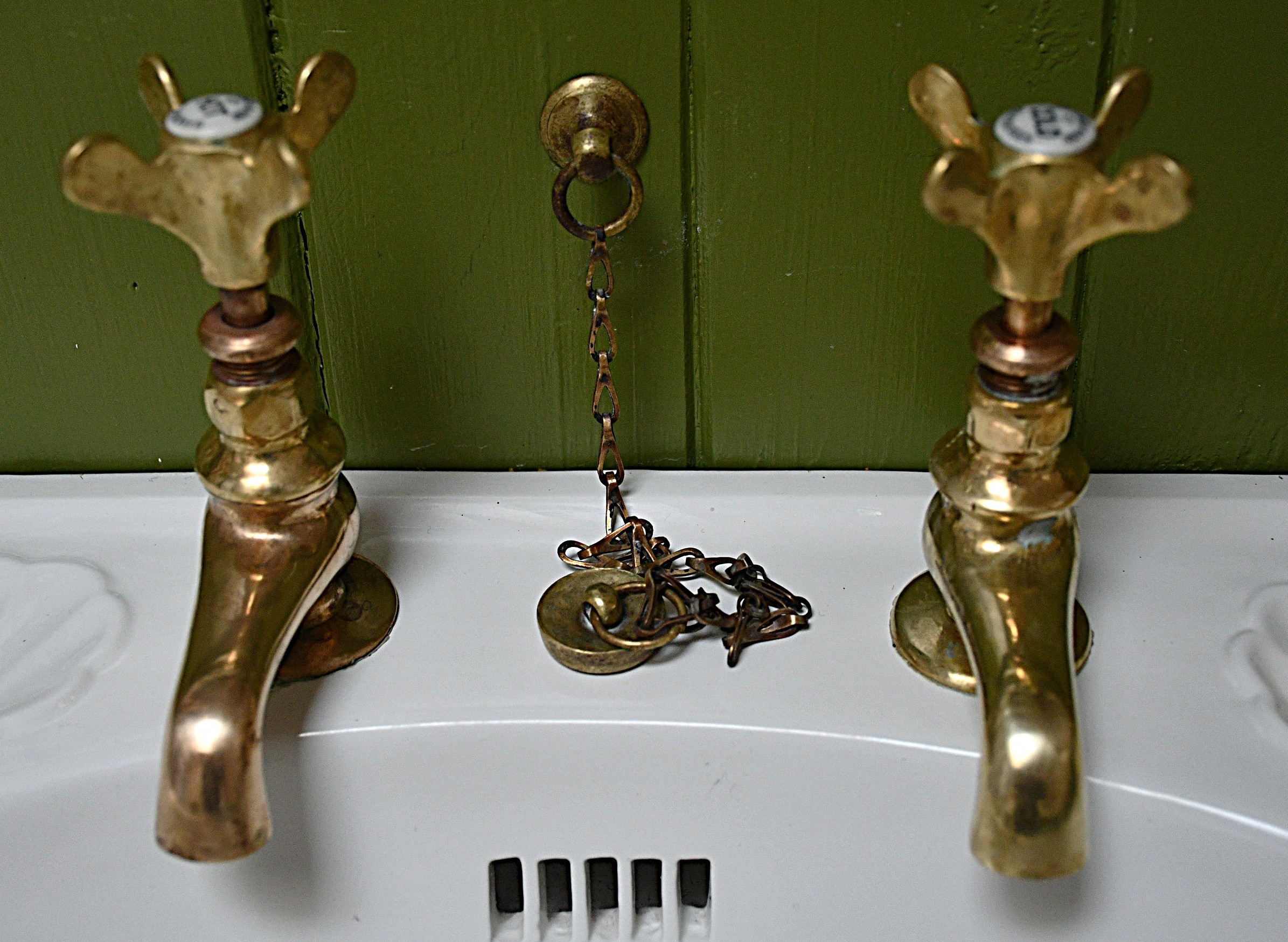
I have installed some wacky taps in the house and some very ordinary ones. All are reclaimed apart from two shower valves and two pairs of basin taps. These have been supplied by Barber Wilson, who still manufacture quality traditional taps. The only reason that we had to purchase new taps is that, despite having hundreds of taps in stock, when you need a specific tap for your own project it is always going to be the case that you can’t get one anywhere. Most old taps will work well but we all like a really good thermostatic shower valve that is reliable first thing in the morning as we rush to get to work. One development over the years that is undeniable is that modern shower valves are better than the Victorian ones. I have included a Barber Wilson thermostatic shower in our en-suite bathroom purely for this reason.
It obviously makes installation of antique and reclaimed bathrooms a great deal easier when you have a workshop nearby full of spare parts, but I would encourage anybody to try and fit interesting antique fixtures, as ceramic manufacturer Emma Bridgewater once said, ‘The beautiful brass bib taps from Mongers are a pleasure every time I use them.’
